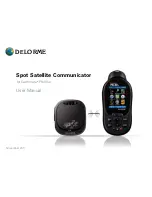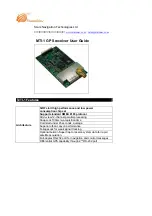
Your GPS receiver automatically keeps a record of your travel as a
track log. You can save all or part of the track log as up to 10
tracks for future navigation. When traveling in unfamiliar territory,
this is a quick and easy way to make sure you always know how to
get back to your starting point.
See “Tracks,” page 27 for details
and instructions.
This GPS receiver comes equipped with mapping data including
locations of hundreds of worldwide cities; U.S. state, Canadian
provincial and European country boundaries; and U.S. interstate
freeways, highways and exits. By using the Data Interface to
download additional mapping data such as points of interest, local
streets from a computer (see “Interface Options,” page 75), you
will also be able to find addresses or intersections. You can save any
of these locations as waypoints.
Waypoints are specific locations you have the receiver record. In the
following sections, you can learn how to mark you current location
as a waypoint; save cities, addresses, intersections, points of interest
or exits as waypoints; and set coordinates for a waypoint anywhere
in the world. This GPS receiver can store up to 500 waypoints which
can be recalled to show you the direction of travel to the individual
point or in a series of points or route navigation.
See “Waypoints,”
page 32 for details and instructions.
You can use a series of up to 50 points (waypoints, cities, points of
interest, addresses, intersection or exits) to create up to 50 routes.
See “Routes,” page 63 for details and instructions.
The following sections will explore your options, such as navigation
and editing, for tracks, waypoints, cities, points of interest,
addresses, intersections, exits and routes.
Track
Waypoints
Intersection
Points of Interest
Exits
Route
Navigation Tools
N AV I G AT I O N T O O L S
Cities
Address
















































